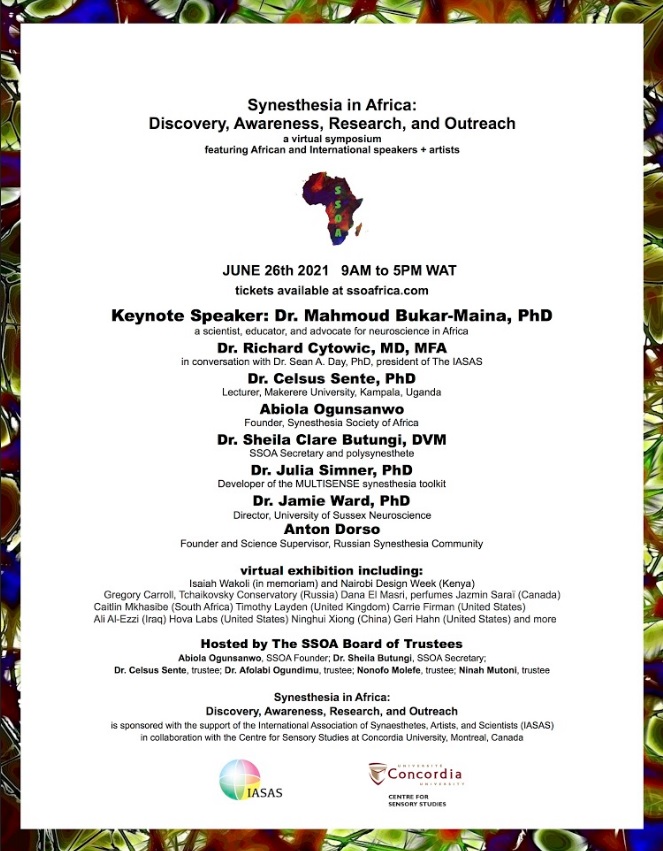‘Synesthesia in Africa: Discovery, Awareness, Research, and Outreach’ by Caitlin Mkhasible | South Africa
South African artist Caitlin Mkhasibe is interested in synesthesia -- a perceptual phenomenon in which stimulation of one sensory or cognitive pathway leads to involuntary experiences in a second sensory or cognitive pathway -- and has explored it in her artwork. Artists are playing an important role in simulating the experience of synesthesia, bridging gaps between scientists and synaesthetes. Caitlin, who is both a drummer and a visual artist, was invited to attend the online symposium on synesthesia in Africa on June 26, where her artwork was recognized and included in a group exhibition. Here she shares her learning from participating in the conference along with a few images of her work.
Overview
Synesthesia in Africa: Discovery, Awareness, Research, and Outreach, hosted by the Synesthesia Society of Africa (SSOA), was the first Pan-African synesthesia symposium. It was held virtually via the Accel Events platform on the 26th of June, 2021. Abiola Ogunsanwo, based in Nigeria, is the founder of the SSOA. The event was hosted with support from the International Association of Synaesthetes, Artists, and Scientists (IASAS) and the Centre for Sensory Studies at Concordia University in Montreal, Canada. This was the start of SSOA’s global collaboration, featuring international speakers, artists, designers and institutions on the topic of cross-sensory phenomena. Participants from the following 25 countries attended: Nigeria, Uganda, Kenya, Botswana, Rwanda, South Africa, Iraq, Argentina, Australia, China, Iceland, Denmark, Finland, Belgium, Luxembourg, Netherlands, England, Ireland, Spain, Greece, Germany, Poland, Russia, Canada, United States. Judging from the comments of those who attended, the symposium was very successful and the IASAS is now raising funds for their next event in Washington, D.C.
Synesthesia is a neurological phenomena which involves the overlapping of senses. For example, a person with synesthesia might taste chocolate when seeing the colour blue, see orange when hearing an orchestra or associate February with circles. “There are more than 100 forms of synesthesia, which is not an illness, but is instead a neurocognitive difference that affects about 4% of the world population” (SSOA media release on ssoafrica.com). Professor of neuropsychology and developer of the MULTISENSE synesthesia toolkit at the University of Sussex in England, Dr. Julia Simner, PhD, translated 4% to 307 million synaesthetes - equivalent to the entire population of North America or the combined population of Algeria, Nigeria, Botswana, Namibia and South Africa.
SSOA’s online symposium began with welcoming addresses from founder Abiola Ogunsanwo and Carolyn ‘CC’ Hart (IASAS secretary, artist, author, neurodiversity advocate, manual therapist and mirror-touch synaesthete, based in the United States). A total of eight speakers from Nigeria, Uganda, the United Kingdom, Netherlands, Russia and the United States presented talks. Despite some presentations being pre-recorded due to poor internet connections, speakers were still accessible and answered questions in the comments section of the platform. All presentations, including those that were live, will be available on the IASAS’ Youtube Channel.
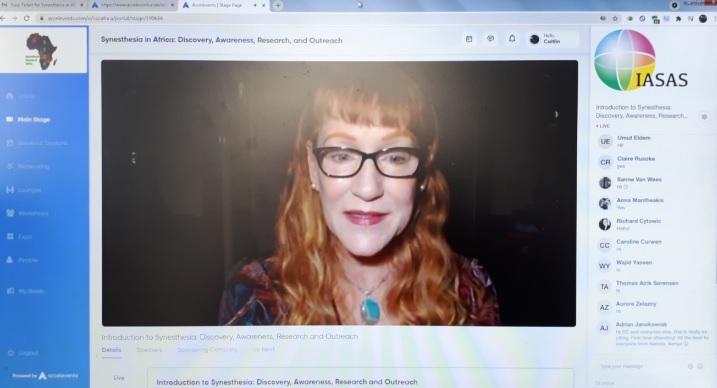
African Synesthesia - Issues, Support and Solutions
Keynote speaker, Dr. Mahmoud Bukar-Maina, PhD (a Nigerian scientist, educator, and advocate for neuroscience in Africa, based in the United Kingdom) emphasized that Africa, with the highest and oldest genetic diversity rate, is under-funded in the area of neuroscience research and under-represented by publications in prestigious journals. The visibility of work from Africa is not prioritized, despite having three powerhouses of neuroscience – Nigeria, Egypt and South Africa. These three countries receive local funding, whereas the rest of Africa receives international funding. A lack of local funding means laboratories are under-equipped. Corruption in African countries also affects aid in scientific research.
The formation of SSOA is in good timing, as visible, online camaraderie against intolerance and stigma is crucial in the world’s current, polarized social climate. The symposium was a supportive and reciprocal environment for the combined effort of seeking families to share experiences and information – a space that had been lacking in Dr. Sheila Clare Butungi’s life. Dr. Butungi, a polysynaesthete, is the SSOA secretary, trustee, veterinary surgeon for the Ministry of Agriculture, Animal Industry and Fisheries of Uganda. She experienced public skepticism while trying to create a platform on Facebook.
For neuroscientific research to truly become pan-African, local scientists and artists must be prioritized to work on research studies. Local scientists can engage participation from willing synaesthetes’ in their areas and local artists can help to bridge gaps between scientists and synaesthetes by simulating the experience of synesthesia.
Synesthesia Art Exhibition
I was invited to participate in a virtual group exhibition as part of the SSOA symposium, because of an article published in 2015 on the Emergent Art Space website about my project on synesthesia. Four of my past artworks that interpret the intersection of hearing and sight under various topics, using abstract mark-making, were chosen for the exhibit. These works can be engaged as examples of how sound is subjectively simulated through visuals. In being a drummer, I find myself creating art that mimics the circular shape of drums. Through my artistic participation in the symposium, I further learned about synesthesia and had the opportunity to show my support for the community.
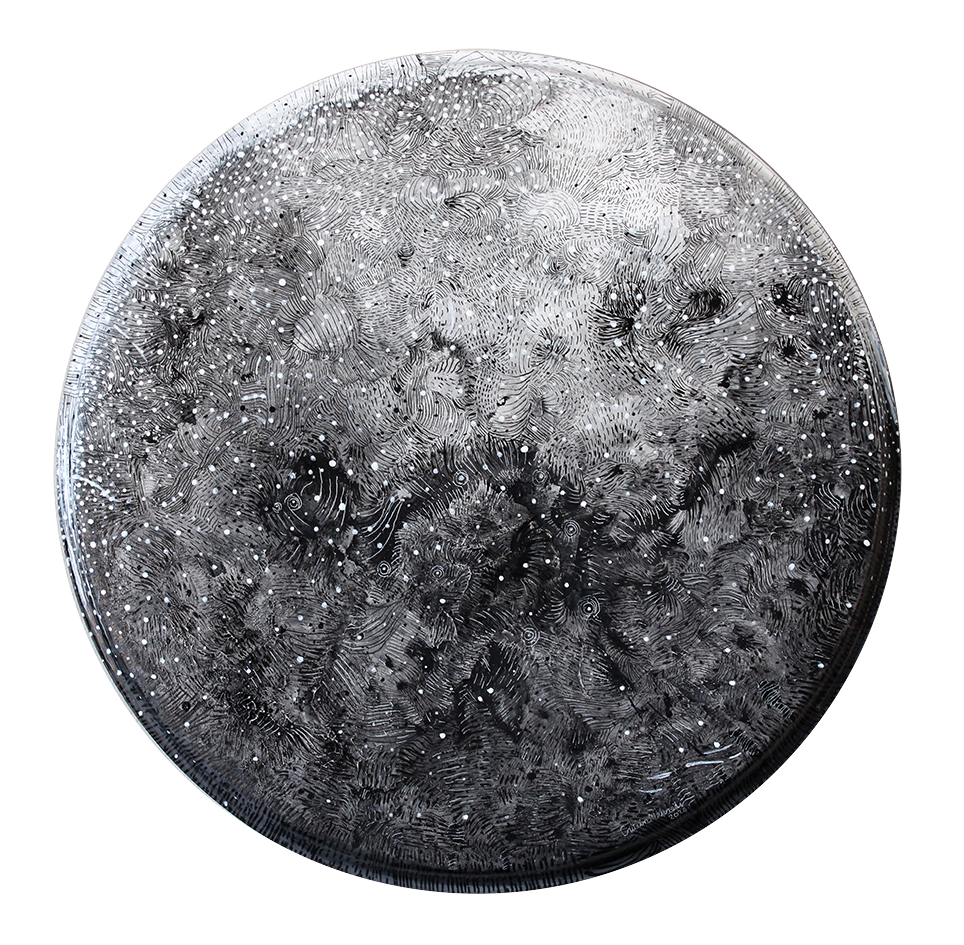
Drum Moon I (2020) was created using ink and acrylic on two old, Remo drum heads that the artist played on.
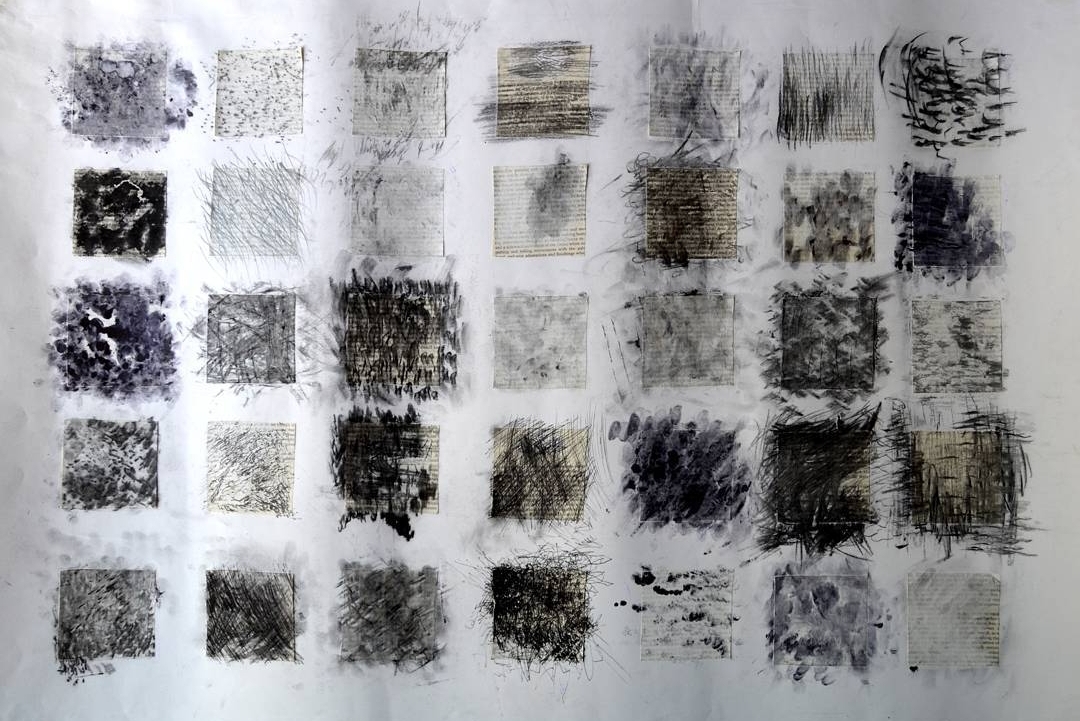
Drum Squares (2016) depicts dipped drumsticks and fingers in ink, or charcoal sticks used as drum sticks, to play various drum patterns and percussive techniques onto squares of paper to create a visual catalogue of drumming samples.
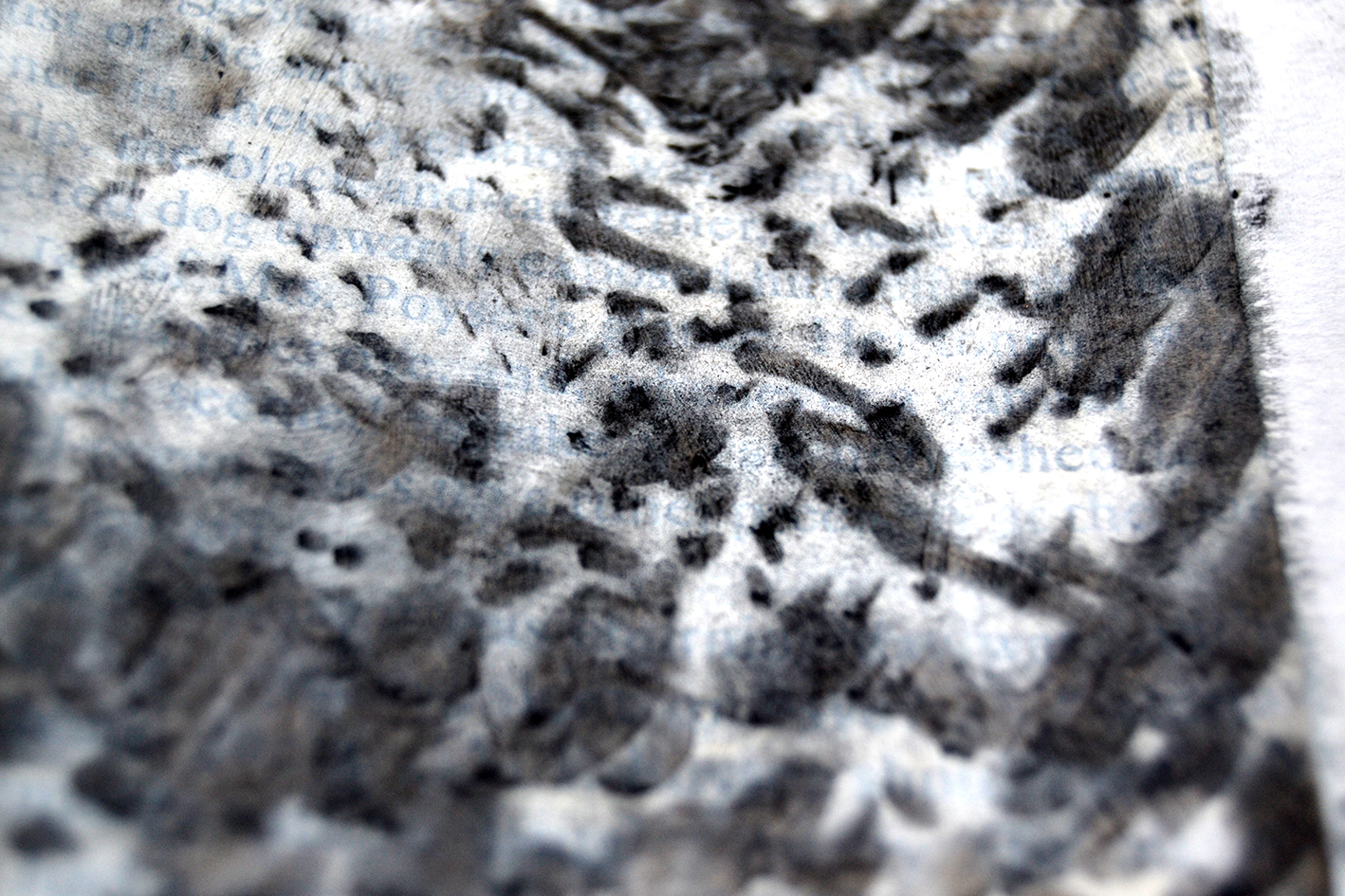
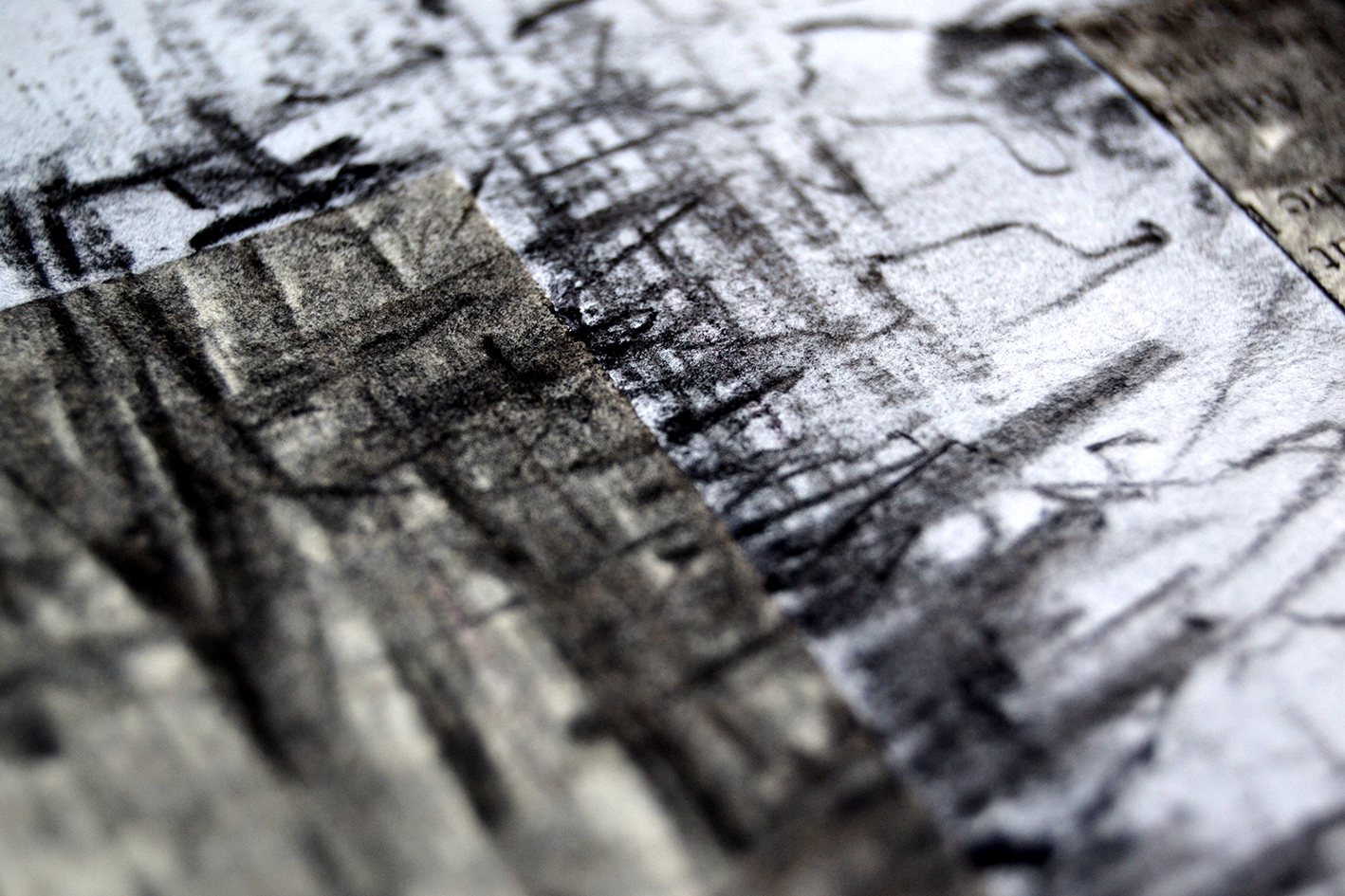
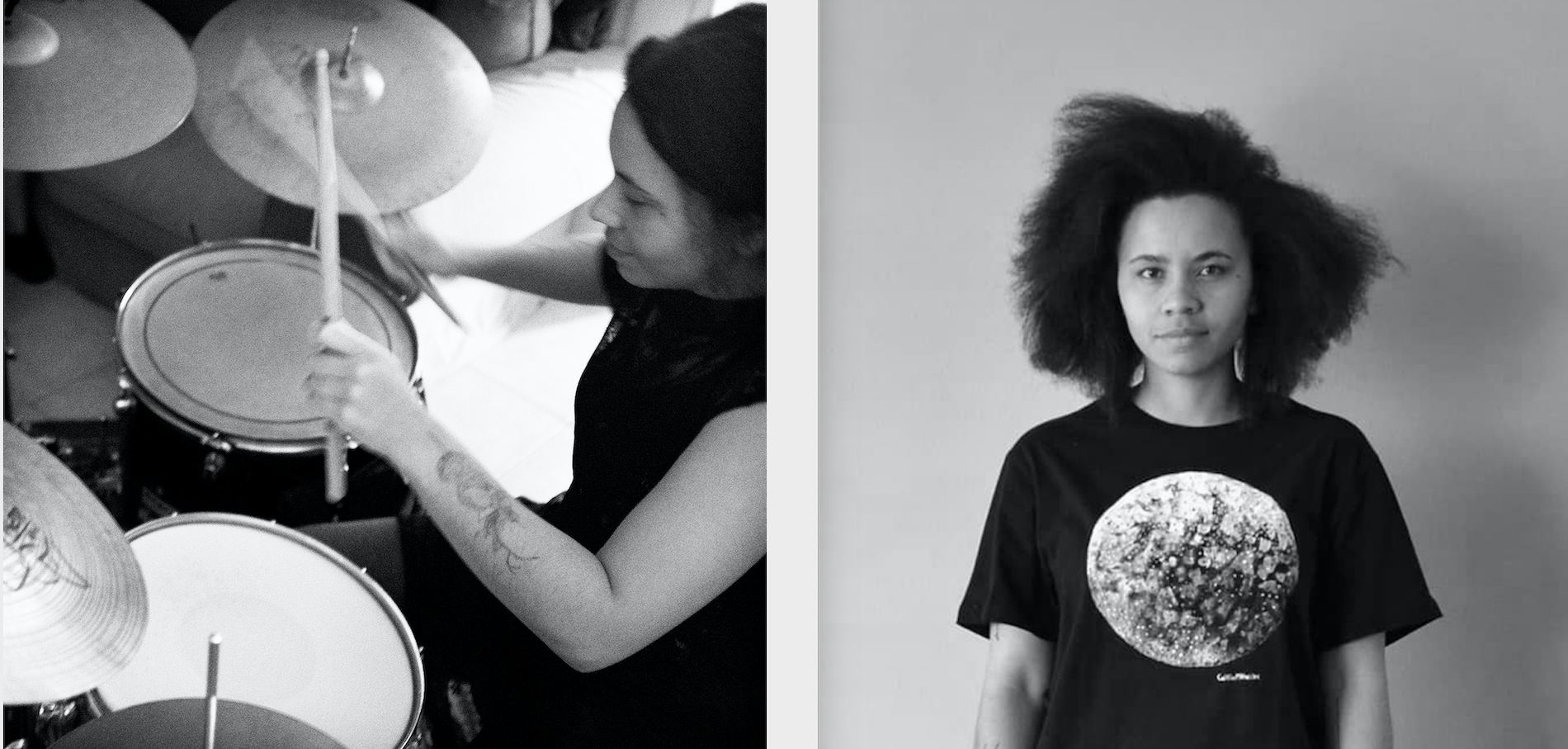
ABOUT THE AUTHOR & ARTIST
In 2015, Caitlin Mkhasibe graduated with a BFA from the Michaelis School of Fine Art at the University of Cape Town. She is a Cape Town based multi-media artist and drummer (Morning Pages) who uses abstract mark-making to mimic texture and sound. Mkhasibe’s interests include ecology and outer space.
RESOURCE LINK: IASAS Events
